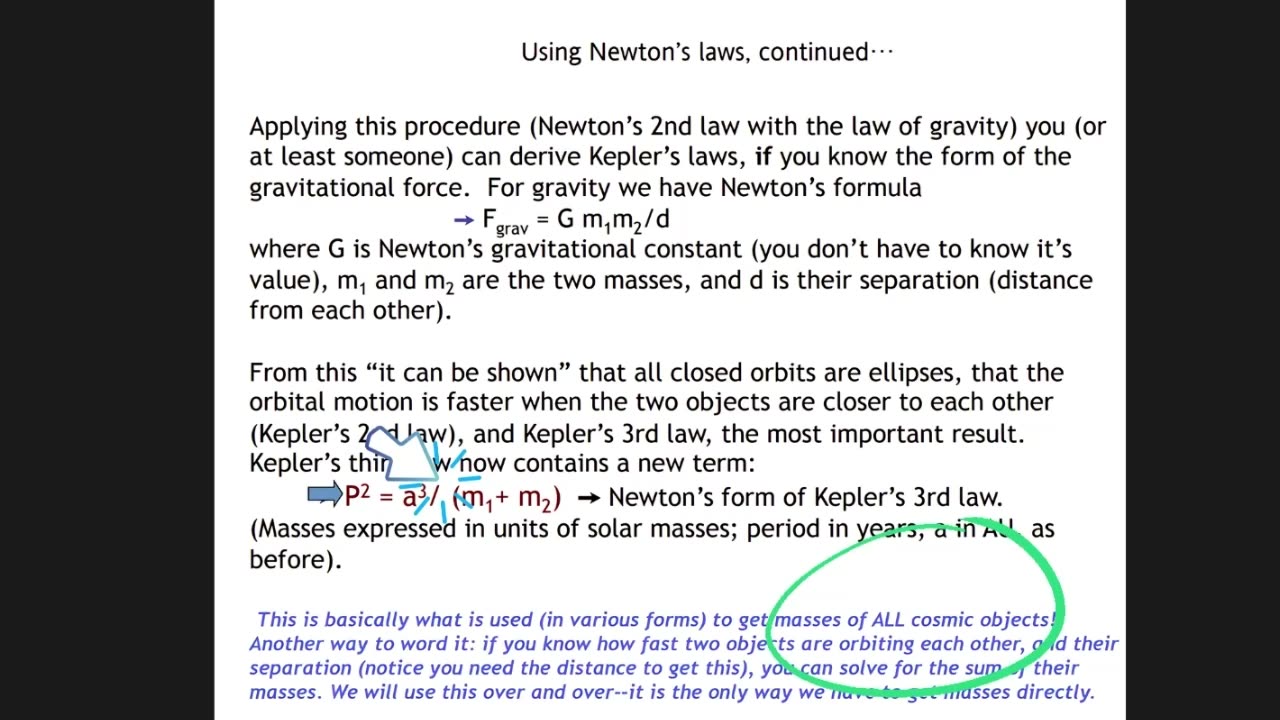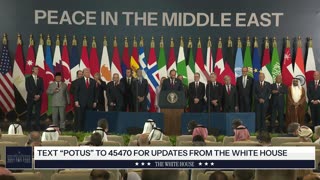Premium Only Content

About the 'Gravitational Constant'....
About the 'Gravitational Constant'....
The force you named gravity, is not in question, the causal mechanism IS!
We agree that things go down when dropped.
Little 'g' is LATITUDE DEPENDANT and can be derived by...
The kinematic equation:
ℎ=1/2at^2+vt
Where:
- ℎ is the height of the ball above the ground
- a is the constant acceleration downward
- t is the time for the ball to fall to the ground
- v is the initial velocity, which is 0 in this case (since the ball is dropped from rest)
Simplified kinematic equation when the initial velocity v=0:
ℎ=1/2at^2
solved for acceleration a:
a=2h/t^2
To put this into a real life situation, we only need to know the height at which an object is dropped and the time it took to hit the ground to calculate the rate at which it falls.
if an object is dropped from 10 meters,
and it takes 1.43 seconds to fall,
we can solve for a,
a= 2x10/(1.43)^2
a= 20/2.0449
a= 9.78
The gravitational constant G is a key part of Newton's law of universal gravitation, which states that the force FF between two masses m1 and m2 separated by a distance r is given by:
F=G*(m1m2/r^2)
This constant G is what makes the equation work, giving us the correct magnitude of the gravitational force.
Historical Context: Cavendish Experiment
The first precise measurement of G was conducted by Henry Cavendish in 1798 using a torsion balance apparatus. Cavendish's experiment didn't directly measure G but rather the density of the Earth. From this, G was later derived. The setup involved measuring the tiny gravitational attraction between lead spheres, which allowed Cavendish to calculate the force and thus infer the value of G indirectly
Deriving G Without Earth's Mass
To derive G without knowing the Earth's mass, we can turn to the principles of the Cavendish experiment, which relies on measuring the gravitational force between known masses in a controlled environment.
Setup the Experiment: Use a torsion balance with two small masses m1 and m2 suspended from a wire. Place two larger masses M1 and M2 nearby, such that they exert a gravitational force on the smaller masses.
Measure the Force: The gravitational attraction between the masses will cause the wire to twist. Measure the angle of twist θ, which is proportional to the force F.
Calculate the Torsion Constant:
The torsion constant κκ of the wire can be determined by measuring the period of oscillation of the system.
The torque τ due to the gravitational force is given by τ=κθ
Relate Force to Torque:
The force between the masses is related to the torque by
τ=F⋅d
where d is the distance between the masses.
Derive G:
Using the measured values, we can derive G from the relationship
G=m1m2τ/r2
Here, r is the distance between the centers of the masses m1 and m2, and τ is the torque measured.
Mathematical Formulation
Given the torsion balance setup, the gravitational force can be expressed as:
The torque τ is related to the force by:
τ=F⋅d Since τ=
-

Anti-Disinfo League
1 month agoAether Cosmology Community Twitter Night
5781 -
 LIVE
LIVE
Dr Disrespect
4 hours ago🔴LIVE - DR DISRESPECT - BATTLEFIELD 6 - JET CRASHES, EXPLOSIONS, 360 NO-SCOPES
1,711 watching -
 LIVE
LIVE
StoneMountain64
1 hour agoBattlefield 6 Flick Keybind is WILD
278 watching -
 DVR
DVR
Side Scrollers Podcast
3 hours agoTony Blair SHILLS For Digital ID + UK BLOCKS 4Chan + Hasan DogGate ESCALATES + More | Side Scrollers
13.4K5 -
 1:01:37
1:01:37
DeVory Darkins
2 hours ago $23.52 earnedHostages released as Trump delivers historic speech... Portland descends into bizarre protest
83.5K45 -
 UPCOMING
UPCOMING
Jeff Ahern
34 minutes agoMonday Madness with Jeff Ahern
1 -
 LIVE
LIVE
Michael Heaver
3 hours agoThis Scandal Could FINISH Starmer
61 watching -
 1:06:45
1:06:45
Timcast
3 hours agoTrump WINS, Will Federalize IL Guard, Billionaire Warns CIVIL WAR Has Begun
136K144 -
 1:58:38
1:58:38
The Charlie Kirk Show
3 hours agoPeace! + SLC Armed Queers | Kassam, Wheeler | 10.13.2025
58.4K35 -
 54:22
54:22
The White House
3 hours agoPresident Trump Delivers Remarks to World Leaders
21.7K28